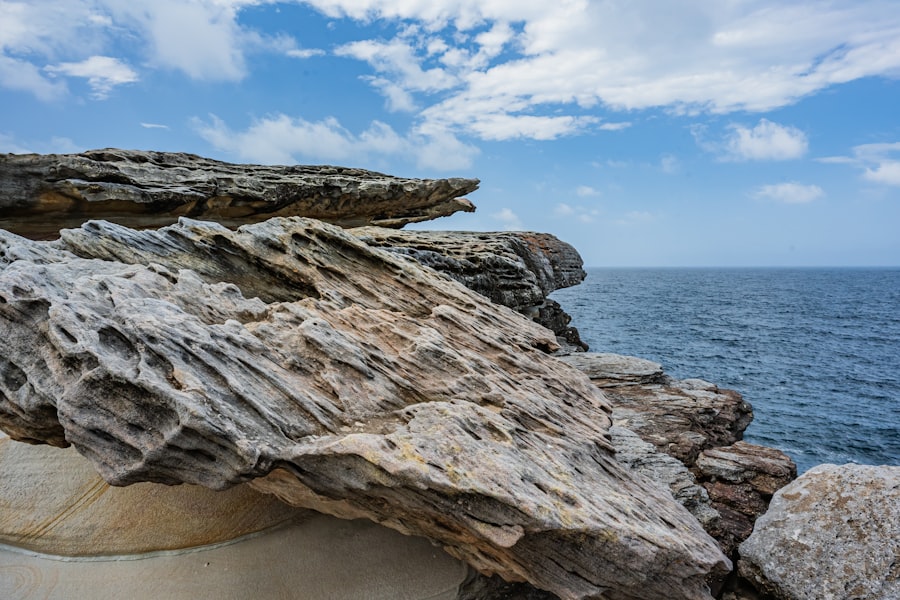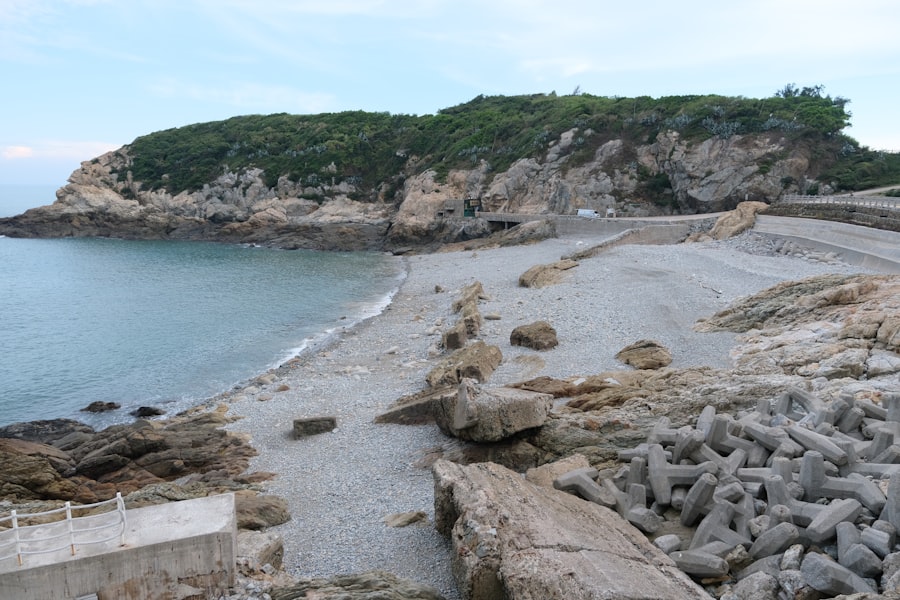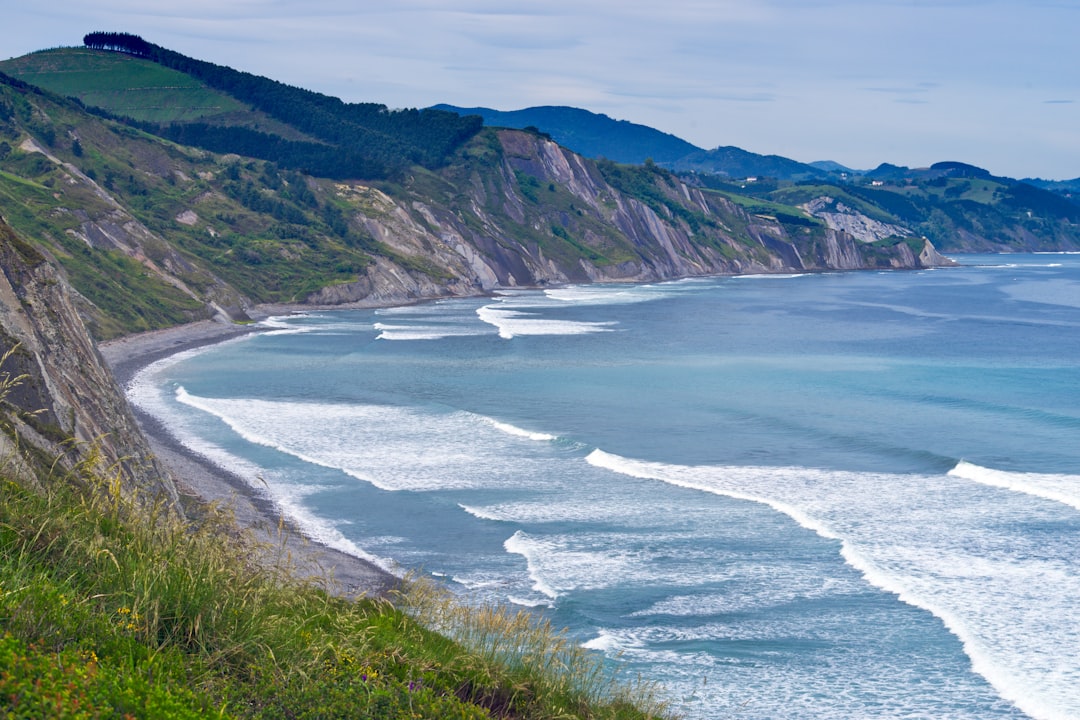Coastal erosion and sinking are pressing issues that affect many regions around the world. The primary causes of these phenomena can be attributed to both natural processes and human activities. Natural factors include wave action, tidal forces, and the gradual rise in sea levels due to climate change.
As ocean waters warm, they expand, contributing to higher sea levels that can inundate coastal areas. Additionally, storms and hurricanes can exacerbate erosion by generating powerful waves that erode shorelines and displace sediment. The interplay of these natural forces can lead to significant land loss over time, threatening ecosystems and human settlements alike.
Human activities also play a crucial role in accelerating coastal erosion. Urban development, deforestation, and the construction of infrastructure such as roads and buildings can disrupt natural sediment flow and alter coastal dynamics. For instance, the extraction of sand for construction purposes can deplete beaches, making them more vulnerable to erosion.
Furthermore, the construction of jetties and seawalls can interfere with the natural movement of sediment along coastlines, leading to increased erosion in adjacent areas. Understanding these causes is essential for developing effective strategies to mitigate the impacts of coastal erosion and protect vulnerable regions.
Key Takeaways
- Coastal erosion and sinking are caused by natural processes, human activities, and climate change.
- Natural solutions for coastal protection include restoring wetlands, mangroves, and dunes to act as natural barriers against erosion.
- Engineering solutions such as seawalls, breakwaters, and beach nourishment can help protect coastlines from erosion.
- Coastal zoning and land use planning are essential for sustainable development and reducing the impact of erosion on coastal communities.
- Monitoring and early warning systems are crucial for predicting and responding to coastal erosion and sinking.
Implementing Natural Solutions for Coastal Protection
Natural solutions for coastal protection have gained recognition as effective and sustainable alternatives to traditional engineering approaches. These solutions often involve the restoration and preservation of natural ecosystems, such as wetlands, mangroves, and coral reefs, which serve as buffers against storm surges and erosion. For example, mangrove forests can absorb wave energy and reduce the impact of flooding, while wetlands can act as sponges, absorbing excess water during heavy rainfall.
By enhancing these natural systems, communities can bolster their resilience to coastal hazards while simultaneously promoting biodiversity. In addition to restoring existing ecosystems, creating new green spaces along coastlines can also provide significant protective benefits. Living shorelines, which incorporate native vegetation and natural materials like rocks and oyster reefs, can stabilize shorelines while offering habitat for marine life.
These approaches not only help mitigate erosion but also enhance the aesthetic value of coastal areas, making them more appealing for tourism and recreation. By prioritizing natural solutions, communities can achieve long-term coastal protection while fostering a healthier environment.
Utilizing Engineering Solutions for Coastal Protection

While natural solutions are increasingly favored, engineering solutions remain a vital component of coastal protection strategies. These methods often involve the construction of physical barriers designed to shield coastlines from the forces of nature. Seawalls, groins, and breakwaters are common engineering structures that help prevent erosion by dissipating wave energy and controlling sediment movement.
However, engineering solutions come with their own set of challenges. They can be expensive to construct and maintain, and their effectiveness may diminish over time due to ongoing erosion or changing environmental conditions.
Moreover, these structures can sometimes lead to unintended consequences, such as increased erosion in adjacent areas or disruption of local ecosystems. Therefore, it is crucial for planners and engineers to carefully assess the potential impacts of these solutions and consider integrating them with natural approaches for a more holistic coastal management strategy.
Coastal Zoning and Land Use Planning
| Metrics | Data |
|---|---|
| Coastal Zone Area | 1000 square kilometers |
| Population Density | 200 people per square kilometer |
| Land Use Categories | Residential, Commercial, Industrial, Conservation |
| Zoning Regulations | Setback requirements, Height restrictions, Land use restrictions |
Coastal zoning and land use planning are essential tools for managing development in vulnerable coastal areas. By establishing regulations that dictate how land can be used near coastlines, communities can minimize risks associated with coastal erosion and flooding. Effective zoning practices involve identifying high-risk areas and restricting certain types of development in those zones.
This proactive approach not only protects lives and property but also preserves natural habitats that contribute to coastal resilience. Incorporating climate change projections into land use planning is increasingly important as sea levels continue to rise. Planners must consider future scenarios when designing coastal developments to ensure they remain safe and sustainable over time.
This may involve creating buffer zones that allow for natural migration of ecosystems or implementing policies that encourage retreat from high-risk areas. By prioritizing thoughtful zoning and land use planning, communities can create safer environments while promoting sustainable growth along their coastlines.
Monitoring and Early Warning Systems for Coastal Erosion
Monitoring coastal erosion is critical for understanding its dynamics and implementing effective management strategies. Advanced technologies such as satellite imagery, aerial surveys, and remote sensing allow researchers to track changes in shoreline position over time. These tools provide valuable data that can inform decision-making processes regarding coastal protection measures.
Regular monitoring enables communities to identify areas at risk of erosion early on, allowing for timely interventions before significant damage occurs. In addition to monitoring, establishing early warning systems is essential for preparing communities for potential coastal hazards. These systems can provide real-time information about storm surges, high tides, or other events that may exacerbate erosion.
By disseminating alerts through various channels—such as mobile apps, social media, or community networks—local authorities can ensure residents are informed and prepared to take necessary precautions. Investing in monitoring and early warning systems enhances community resilience by enabling proactive responses to coastal threats.
Beach Nourishment and Sand Dune Restoration

Beach nourishment is a widely used technique aimed at replenishing eroded beaches with sand from external sources. This process not only restores the beach’s physical appearance but also enhances its protective capacity against storm surges and erosion. By adding sand to beaches, communities can create wider shorelines that absorb wave energy more effectively.
However, beach nourishment is not a permanent solution; it requires regular maintenance and replenishment due to ongoing erosion processes. Sand dune restoration is another critical aspect of coastal protection that complements beach nourishment efforts. Dunes act as natural barriers against wind and waves, providing essential protection for inland areas.
Restoring dunes involves planting native vegetation that stabilizes sand and promotes dune formation over time. This approach not only enhances coastal resilience but also supports local wildlife habitats. By combining beach nourishment with sand dune restoration, communities can create a more robust defense against coastal erosion while fostering healthy ecosystems.
Building and Maintaining Coastal Structures
The construction of coastal structures such as seawalls, jetties, and breakwaters requires careful planning and ongoing maintenance to ensure their effectiveness over time. These structures must be designed to withstand the forces of nature while minimizing negative impacts on surrounding environments. Engineers must consider factors such as wave height, sediment transport patterns, and local geology when designing these structures to ensure they provide adequate protection without causing further erosion elsewhere.
Maintenance is equally important in preserving the functionality of coastal structures. Regular inspections are necessary to identify signs of wear or damage that could compromise their integrity. Communities must allocate resources for repairs or upgrades as needed to maintain the effectiveness of these protective measures.
By prioritizing both construction quality and ongoing maintenance, communities can enhance their resilience against coastal hazards while safeguarding investments in infrastructure.
Managing Stormwater Runoff and Pollution
Effective management of stormwater runoff is crucial for protecting coastal ecosystems from pollution and degradation. Urbanization often leads to increased impervious surfaces that prevent water from soaking into the ground, resulting in higher volumes of runoff during rain events. This runoff can carry pollutants such as sediments, nutrients, and chemicals into nearby waterways, negatively impacting marine life and water quality.
Implementing green infrastructure solutions—such as rain gardens, permeable pavements, and bioswales—can help mitigate stormwater runoff by promoting natural absorption processes. These practices not only reduce pollution but also enhance local aesthetics and biodiversity by creating green spaces within urban environments. By prioritizing stormwater management strategies that protect coastal ecosystems from pollution, communities can foster healthier environments while enhancing their resilience against climate-related challenges.
Promoting Sustainable Coastal Development
Sustainable coastal development is essential for balancing economic growth with environmental protection in vulnerable regions. This approach emphasizes responsible land use practices that minimize negative impacts on ecosystems while promoting community well-being. Sustainable development initiatives may include eco-friendly building practices, renewable energy integration, and conservation efforts aimed at preserving natural habitats.
Engaging stakeholders in the planning process is vital for ensuring that development aligns with community values and environmental goals. By involving local residents, businesses, and environmental organizations in decision-making processes, planners can create development strategies that reflect diverse perspectives while addressing pressing challenges such as climate change adaptation. Promoting sustainable coastal development not only enhances community resilience but also fosters long-term economic viability by protecting valuable natural resources.
Engaging Local Communities in Coastal Protection Efforts
Local communities play a pivotal role in coastal protection efforts through active engagement and participation in decision-making processes. Empowering residents to take part in initiatives aimed at safeguarding their coastlines fosters a sense of ownership and responsibility toward local environments.
Education is a key component of community engagement in coastal protection efforts. Raising awareness about the importance of healthy ecosystems and sustainable practices encourages individuals to adopt environmentally friendly behaviors in their daily lives. Workshops, informational campaigns, or school programs can help disseminate knowledge about coastal issues while inspiring collective action among community members.
By fostering a culture of stewardship within local populations, communities can strengthen their capacity to address challenges related to coastal erosion effectively.
Collaboration and Coordination Among Stakeholders for Effective Coastal Protection
Collaboration among various stakeholders is essential for developing comprehensive strategies for effective coastal protection. Government agencies, non-profit organizations, academic institutions, businesses, and local communities must work together to share knowledge, resources, and expertise in addressing complex coastal challenges. Establishing partnerships allows stakeholders to leverage diverse perspectives while fostering innovative solutions tailored to specific regional needs.
Coordinated efforts also facilitate the implementation of integrated management approaches that consider ecological health alongside economic development goals. By aligning policies across different sectors—such as land use planning, environmental conservation, and disaster preparedness—stakeholders can create cohesive frameworks that enhance overall resilience against coastal hazards. Through collaboration and coordination among stakeholders at all levels, communities can develop robust strategies that protect their coastlines while promoting sustainable growth for future generations.
Coastal erosion and land subsidence are pressing environmental issues that threaten coastal communities worldwide. To gain a deeper understanding of these challenges and explore potential solutions, you might find it beneficial to read related articles that delve into the science behind these phenomena. One such resource is available on Freaky Science, which offers insights into various scientific topics. For more information, you can visit their sample page, where you might discover articles that discuss innovative approaches to mitigating coastal erosion and land sinking.
WATCH THIS! The Earth is Trying to Swallow North America: The Unstoppable Geological Disaster
FAQs
What is coastal erosion?
Coastal erosion is the process by which the land along the coast is worn away by the action of waves, currents, and tides.
What causes coastal erosion?
Coastal erosion can be caused by natural factors such as wave action, storms, and sea level rise, as well as human activities such as construction, mining, and dredging.
How does coastal erosion contribute to sinking coastlines?
Coastal erosion can lead to sinking coastlines by removing sediment and land, which can cause the land to subside and sink.
What are the impacts of coastal erosion and sinking coastlines?
Coastal erosion and sinking coastlines can lead to loss of land, damage to infrastructure, loss of habitats, and increased vulnerability to storms and flooding.
What are some methods to stop coastal erosion and sinking coastlines?
Methods to stop coastal erosion and sinking coastlines include beach nourishment, building seawalls and breakwaters, planting vegetation, and implementing coastal management and restoration projects.
What are the challenges in stopping coastal erosion and sinking coastlines?
Challenges in stopping coastal erosion and sinking coastlines include the high cost of coastal protection measures, potential impacts on ecosystems, and the need for long-term planning and maintenance.
